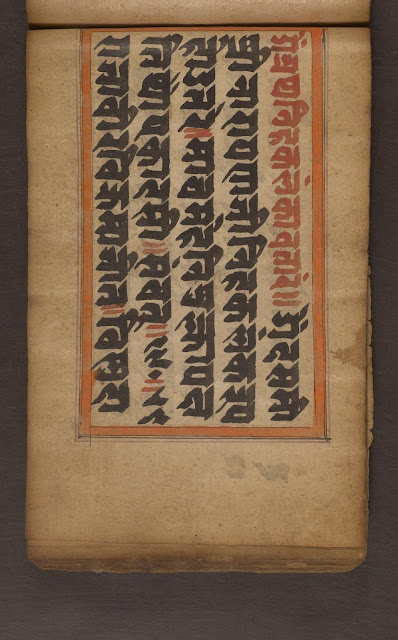First hindu manuscript on facsimilium (they are hard to find!!): The "Saptasalokīgītāṭīkāvāle" is a richly illuminated collection of different texts of praise, unified as a popular pocket book, to be used in private or public veneration of various Hindu deities: Lord Ganesha, Lord Shiva, Lord Brahma, Lord Vishnu, Goddess Durga, Goddess Lakshmi, Goddess Saraswati, Sita, Rama, Lakshmana, Hanuman, Radha and Krishna, Mata Shakti, Mata Tripori Sondari Devi, Shiva Bhagwati (Akingam, Anantnag), Sharda Mata Temple at Gushi (Kupwara)
Codex is structured as follows:
- First two chapters are a selection of verses taken from different sections of the well known Bhagavadgītā with an extensive Hindi commentary in the first section. Both are presented as a discourse between the legendary figure Arjuna and the deity Krsna. The verses include discussion of themes regarding self-realization and mental focusand draws parallels between such knowledge and the knowledge of the Vedas.
- Third section is dedicated to the ten Visnu avatāras and derived from different sections of the Mahābharata. A number of other praise (stotra) texts follows and includes a short collection of stotras attributed to the medieval philosopher Samkara. Text is incomplete, but ends with a set of praises and mantras directed at the deity Śiva. Regarding the term "Avatar", many denominations of Hinduism such as Vaishnavism and some schools of Saivism teach that occasionally a god comes to Earth as a human being to help humans in their struggle toward enlightenment and salvation (moksha). Such an incarnation of a god is called an avatar, or avatāra. Hinduism teaches that there have been multiple avatars throughout history and that there will be more.
The manuscript includes 13 painted illustrations, most of which are for the avatāras of Visnu.
Codex is hosted by Penn Libraries at Pennsylvania University (My favourite section is "Selected Manuscripts").
Codex is hosted by Penn Libraries at Pennsylvania University (My favourite section is "Selected Manuscripts").










